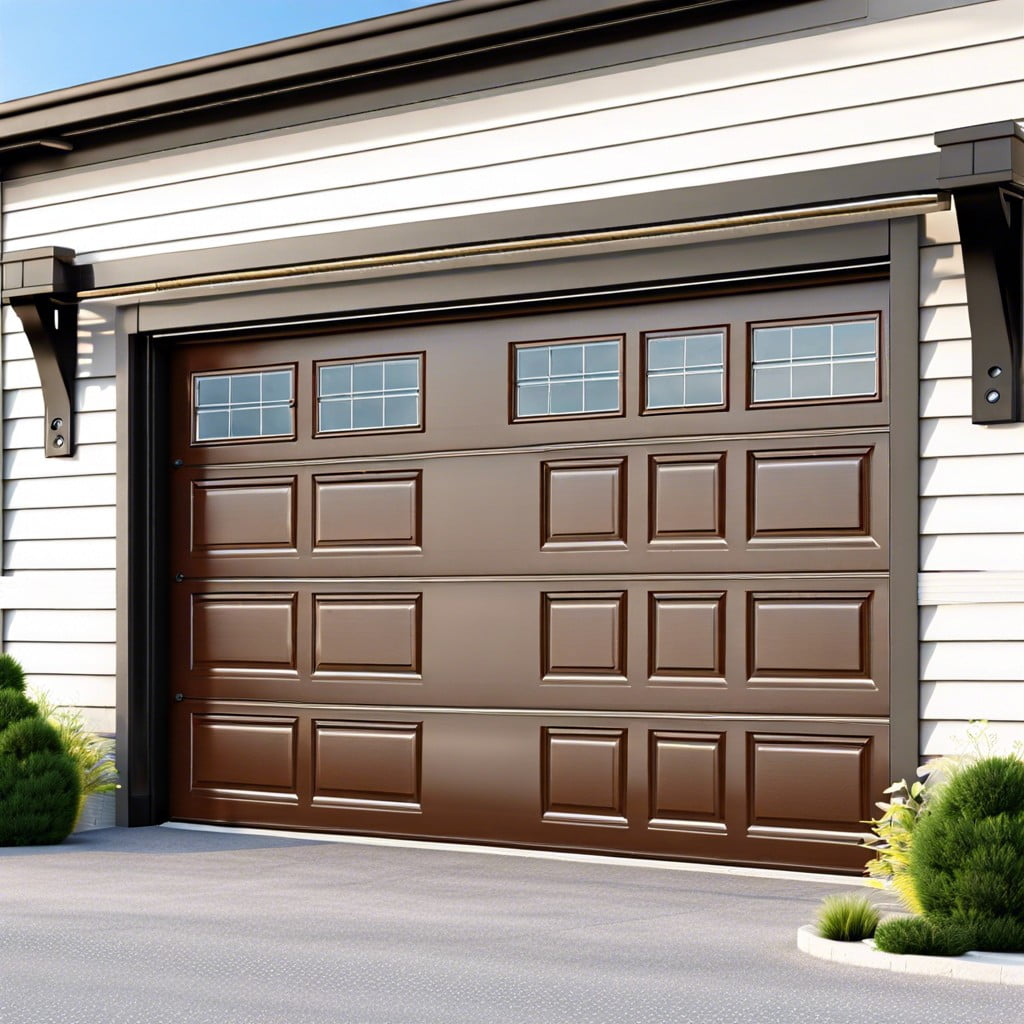Learn how much it typically costs to replace two garage door springs and what factors can influence the overall price.
Key takeaways:
- Garage door spring replacement typically costs 0 to 0.
- Torsion springs cost to 0 each, while extension springs cost to each.
- Signs you need to replace your garage door spring include loud noises, difficulty lifting the door, and uneven movement.
- Invest in high-quality springs to save money in the long run.
- Consider hiring a professional for safety and warranty benefits.
Average Garage Door Spring Cost

Replacing garage door springs can vary in cost, generally falling between $150 and $350 when done professionally. This price includes both the labor and the materials. The variation in cost primarily depends on the type of spring used and the region where the service is performed. It is essential to consider that purchasing springs alone costs between $30 to $100 for a pair, underscoring the significant part of the expense goes into professional installation. This process not only ensures correct installation but also safety, as incorrectly installed garage door springs can pose significant risks.
Garage Door Spring Cost By Type of Spring
Garage door springs come in two main types: torsion springs and extension springs, each varying in cost and durability.
Torsion springs, which are mounted above the garage door opening, have a longer lifespan and provide a smoother motion when the door operates. Costing between $60 to $100 each, these might be pricier than their counterparts, but their efficiency in balancing the door can offset the initial investment.
Extension springs, located above the upper tracks on either side of the door, are typically less expensive, generally ranging from $15 to $45 per spring. They require more parts and can be less safe due to the possibility of snapping under tension, which adds to the thrill of garage door maintenance.
Choosing the right type of spring depends not only on your budget but also on the door’s weight and the size of the garage. Prices can also swing based on the quality of the spring and whether you choose a coated option to prevent rust.
In essence, while torsion springs might make your wallet a bit lighter, they often keep garage doors running smoother and might just outlive several of your less daring hairdos. Meanwhile, extension springs are the budget-friendly daredevils of the garage door world, cheaper and fully prepared to take the leap. Choose wisely!
Signs That You Need To Replace Your Garage Door Spring
If your garage door starts acting more like a rebellious teenager than a well-oiled machine, it might be hinting at spring troubles. Here are a few tell-tale signs:
A loud noise that sounds like a firecracker or gunshot when the door is moving usually signals a broken spring. It’s dramatic, and you’re unlikely to miss it.
Difficulty lifting the door manually can also point towards a spring issue. If it feels as heavy as a small elephant, the springs may no longer be doing their heavy lifting.
If the door lifts unevenly, or appears lopsided as it opens and closes, it might be due to uneven tension in the springs. It’s like trying to run with one shoe off – awkward and not recommended.
So, keep an eye and an ear out for these garage door antics. They’re more just annoying quirks; they’re potential signs that you’re due for a spring replacement.
How To Save On Garage Door Spring Costs
Investing in quality springs might seem counterintuitive when trying to cut costs, but cheaper options often wear out faster, leading to more frequent replacements. Look for high-cycle springs; although they might cost a bit more upfront, the extended lifespan will save money in the long run.
Compare quotes from multiple repair services to ensure you’re getting a competitive price. Don’t just look at the bottom line, though. Check reviews and verify that the service is reputable to avoid poor workmanship that may cost more later.
Take advantage of any available discounts or promotions. Some companies offer reduced prices during certain seasons or discounts for local residents.
Finally, consider learning how to safely replace the springs yourself if you are mechanically inclined. There are many tutorials available, but it’s crucial to understand the high risks involved. The money saved on labor can be substantial, but remember, the project requires strict adherence to safety measures to avoid injuries.
DIY Vs. Professional Garage Door Spring Replacement
Tackling garage door spring replacement on your own might sound like a heroic way to save a few bucks. Remember, something that involves springs under high tension calls for superhero-like caution and precision. Before summoning your inner DIY enthusiast, consider safety risks and the need for special tools, which can turn a saving into an expense if you need to buy them just for this job.
On the flip side, hiring a professional can keep your limbs and your bank account intact (mostly). Experts bring the right tools and experience to quickly diagnose and resolve issues that go beyond a simple spring swap. They can also provide warranties on their work, giving you peace of mind that if something does go wrong afterward, it won’t be another dent in your wallet.
In essence, weigh the risk of personal injury and potential additional costs against the convenience and safety of professional service. Sometimes, paying a bit more upfront can save a lot more down the road—not just in money, but in headaches and YouTube tutorial rabbit holes too.